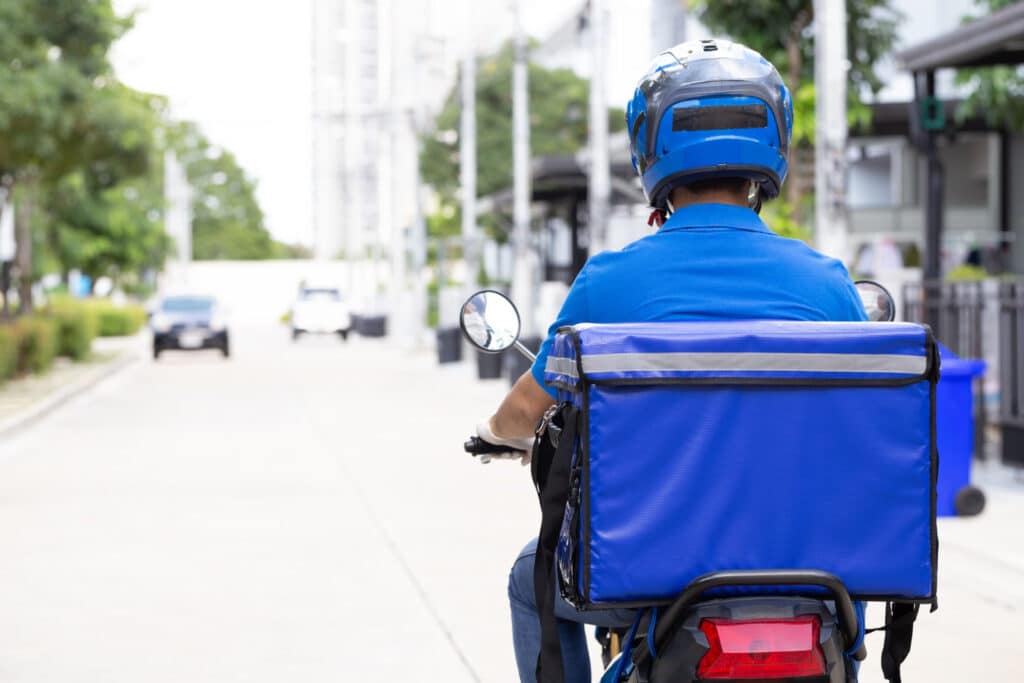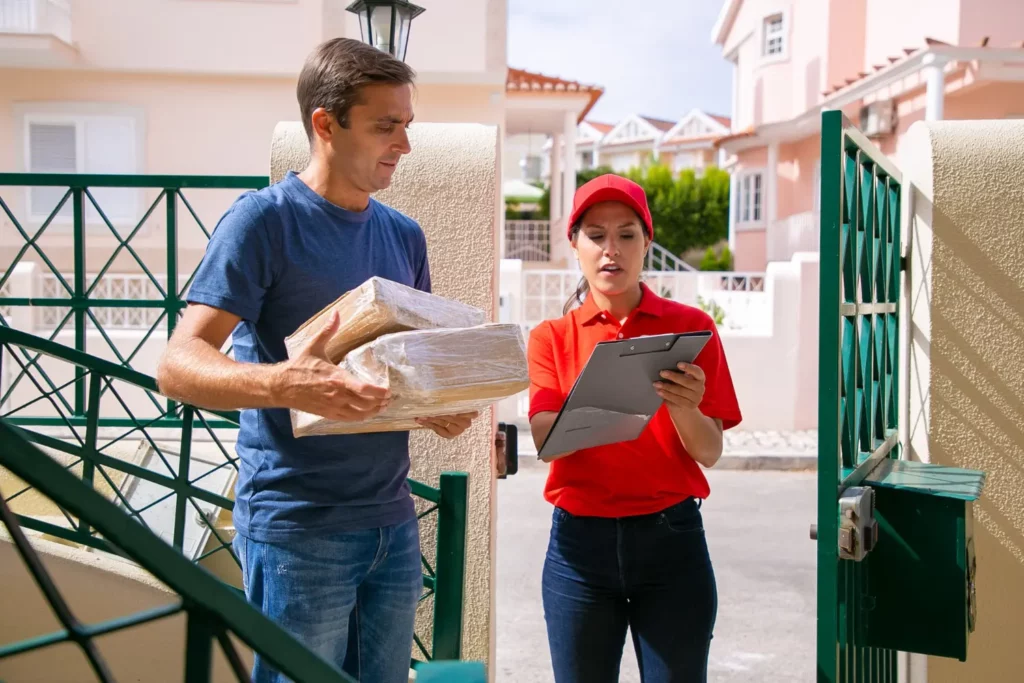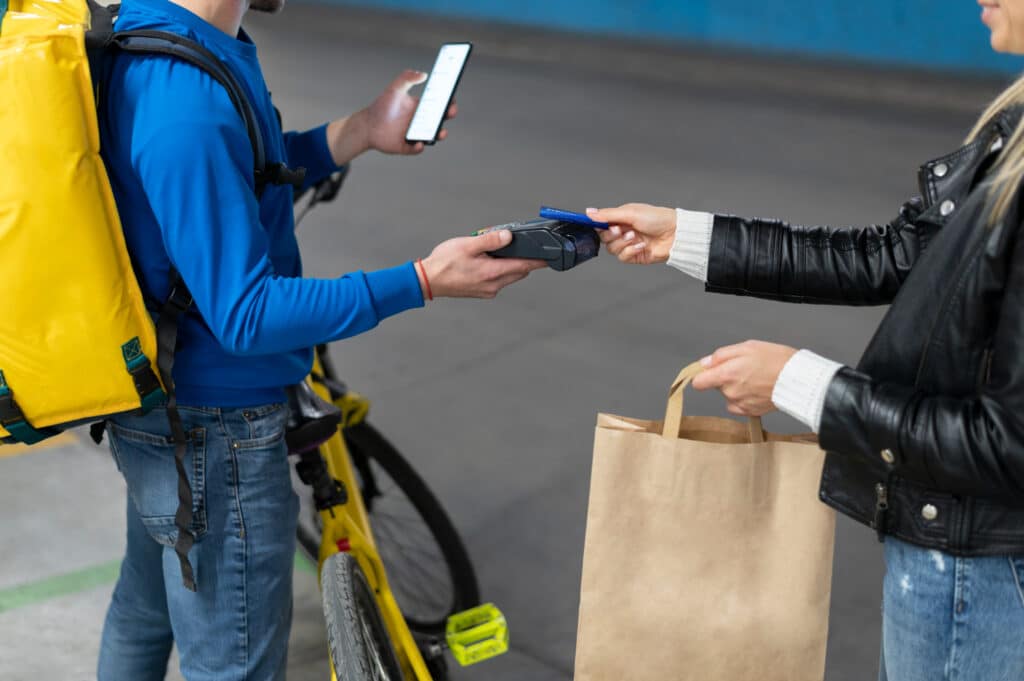The demand for convenient and efficient delivery services has skyrocketed. People rely on reliable delivery businesses, from groceries and packages to essential supplies, to bring goods directly to their doorstep.
If you want to venture into the entrepreneurial world and tap into this thriving industry, starting a non-CDL (Commercial Driver’s License) delivery business could be the perfect opportunity.
Unlike traditional transportation services that require a CDL, a non-CDL delivery business allows you to operate with vehicles under a specific weight limit. This offers a more accessible entry point for aspiring business owners who may not possess a CDL or prefer to operate with smaller vehicles.
This comprehensive guide will walk you through the essential steps to start your non-CDL delivery business. Whether starting from scratch or looking to expand an existing operation, this guide will provide valuable insights to help you launch and grow your successful delivery business.
What is a non-CDL delivery business?
A non-CDL (Commercial Driver’s License) delivery business refers to a delivery service that does not require drivers to hold a CDL. A CDL is a specialized license issued to individuals who operate commercial vehicles above a certain weight or carry certain types of cargo. These vehicles include large trucks, buses, and vehicles transporting hazardous materials.
A non-CDL delivery business typically operates with vehicles under the weight threshold requiring a CDL. In many jurisdictions, vehicles that do not require a CDL include small vans, cars, motorcycles, bicycles, and even foot couriers.
Non-CDL delivery businesses often involve local or regional delivery services, such as courier services, grocery delivery, restaurant delivery, or package delivery. Depending on the specific business model, they can be independent contractors or part of a larger delivery network.
By operating without the requirement of a CDL, these businesses can provide more flexible and cost-effective delivery services for smaller-scale operations or services that do not involve heavy cargo or large vehicles.

Benefits of non-CDL delivery
Indeed, non-CDL delivery businesses offer several benefits, including:
Cost-effective for small businesses
Non-CDL delivery services can be significantly more cost-effective than those requiring drivers with a CDL.
Acquiring and maintaining CDL licenses can involve substantial expenses like training programs, testing fees, and medical examinations. These costs can be prohibitive for small businesses with limited budgets.
By operating without CDL licenses, non-CDL delivery businesses can allocate their resources more efficiently, making it more accessible for entrepreneurs and small businesses to enter the delivery market.
Agile operations
Non-CDL delivery businesses excel in agility and flexibility due to the use of smaller vehicles such as vans, cars, motorcycles, bicycles, or foot couriers.
These vehicles are more maneuverable and can navigate through congested areas, narrow streets, and busy urban environments more easily than large trucks.
The ability to quickly reach and park at the delivery destinations allows non-CDL delivery businesses to make more efficient deliveries, reduce transit times, and increase customer satisfaction.
This agility also enables them to adapt to changing conditions, such as road closures or traffic congestion, and optimize their routes on the go.
Access to local markets
Non-CDL delivery services are particularly well-suited for local or regional markets. By focusing on a specific area, non-CDL delivery businesses can establish strong connections with local businesses and customers.
They can become familiar with the intricacies of the local geography, traffic patterns, and customer preferences, enabling them to provide faster and more personalized service.
Additionally, by operating within a limited radius, non-CDL delivery businesses can reduce transit times and offer same-day delivery or even on-demand deliveries, which are highly valued by customers seeking prompt service.
Lower regulatory requirements
Operating without a CDL reduces the regulatory requirements associated with commercial driving. CDL licenses typically involve specific training, written exams, driving tests, and medical certifications.
By not needing CDL licenses, non-CDL delivery businesses can bypass these requirements and associated costs.
While they still need to comply with general traffic and safety regulations, the absence of CDL-related regulations can streamline the administrative burden and allow for quicker start-up and expansion.
This reduced regulatory complexity can be especially beneficial for small businesses looking to enter the delivery market swiftly and efficiently.

Types of Non-CDL vehicles for deliveries
Motorcycles and Scooters
Motorcycles and scooters are popular choices for deliveries in urban areas. They offer maneuverability, allowing delivery riders to navigate through traffic and reach their destinations quickly.
With their compact size, motorcycles and scooters can access narrow streets and find parking spaces more easily than larger vehicles. They are particularly suitable for food delivery services and courier companies that need to make swift and efficient deliveries within a limited radius.
Electric Bikes
Electric bikes, also known as e-bikes, have gained popularity as eco-friendly alternatives for urban deliveries. These bicycles are equipped with electric motors that assist with pedaling, providing riders with an extra boost of speed and reducing physical exertion.
Electric bikes are especially advantageous in congested cities, as they can move swiftly through traffic and avoid parking issues.
They are often used for last-mile deliveries, such as delivering packages to customers’ doorsteps or transporting food from restaurants to customers in the vicinity.
Cargo Vans and Trucks
Cargo vans and trucks are larger non-CDL vehicles commonly used for deliveries, particularly for transporting bulkier goods and larger quantities of packages.
Cargo vans offer a good balance between storage capacity and maneuverability, making them suitable for deliveries in urban and suburban areas. They are frequently employed by courier companies, e-commerce platforms, and logistics providers.
Trucks, including box trucks and flatbed trucks, are employed for larger-scale deliveries over longer distances or when heavy items need to be transported.
Cars
Although primarily designed for personal transportation, regular passenger cars can also be used for smaller deliveries. Cars are especially suitable for services like food or courier deliveries within a limited area.
Delivery drivers can transport a reasonable number of packages in the trunk or backseat of their vehicles. Cars offer the advantage of convenience and versatility, as they can be easily used for other purposes beyond deliveries, such as personal use or ridesharing.
Three-Wheelers
Three-wheeled vehicles, commonly known as tuk-tuks or auto-rickshaws, are frequently utilized for deliveries in certain countries, particularly in densely populated urban areas. These vehicles have a small cabin with seating for the driver and often an additional passenger.
They provide a cost-effective and efficient solution for navigating through congested traffic and narrow streets. Tuk-tuks are commonly used for local deliveries of goods and are known for their ability to transport a wide variety of items, from groceries to household goods.
Utility Vehicles
Utility vehicles, such as ATVs (All-Terrain Vehicles) or UTVs (Utility Task Vehicles), find applications in deliveries that require traversing off-road or rugged terrain.
These vehicles are designed to handle challenging environments, such as construction sites, farms, or remote areas.
They offer excellent maneuverability, traction, and cargo capacity, making them suitable for specialized delivery requirements, such as delivering supplies to remote locations or transporting goods within large industrial complexes.
Bicycle Trailers
Bicycles equipped with trailers provide a sustainable and efficient option for deliveries in urban areas. These trailers are attached to bicycles and can carry a significant amount of cargo, including packages, groceries, or small parcels.
Delivery riders can navigate through traffic, utilize dedicated bicycle lanes, and easily find parking, making bicycle trailers an eco-friendly and practical choice for last-mile deliveries.
They are often used by local delivery services or eco-conscious companies aiming to reduce their carbon footprint.

How to start a non-CDL business delivery service
Starting a non-CDL (Commercial Driver’s License) business delivery service can be a great opportunity. Here are the steps you can follow to get started:
- Decide on the Type of Delivery Business: Determine the specific type of delivery service you want to provide. It could be anything from local courier services to specialized deliveries like groceries, packages, or medical supplies.
- Create a Business and Marketing Plan: Develop a comprehensive business plan that outlines your target market, services offered, pricing structure, competition analysis, and marketing strategies. This plan will guide your operations and help attract investors or secure financing if needed.
- Purchase a Suitable Delivery Vehicle: Invest in a reliable, suitable non-CDL delivery vehicle that accommodates your business needs. Consider factors like cargo capacity, fuel efficiency, and maintenance costs. You may also opt for leasing or renting a vehicle initially to minimize upfront expenses.
- Comply with Legal and Regulatory Requirements: Research and understand the legal and regulatory requirements for operating a delivery service in your area. This may include obtaining necessary permits, licenses, insurance coverage, and adhering to safety standards. Consult with local authorities or a legal professional to ensure compliance.
- Recruit and Train Drivers: Hire reliable and responsible drivers who meet the driving requirements for non-CDL vehicles. Conduct thorough background checks and driver screenings to ensure safety and reliability. Provide proper training on customer service, efficient route planning, and handling deliveries.
- Invest in Technology Solutions: Implement technology solutions to streamline your operations. Consider investing in a delivery management software or app that allows you to track deliveries, manage orders, optimize routes, and provide real-time updates to customers. This technology can enhance efficiency and customer satisfaction.
- Establish Partnerships and Networking: Develop partnerships with local businesses, such as retailers or e-commerce platforms, to secure delivery contracts. Attend networking events, join local business associations, and utilize online platforms to market your services and build connections with potential clients.
- Build a Strong Brand: Create a distinctive brand identity that reflects your business values and differentiates you from competitors. Design a professional logo, develop a user-friendly website, and utilize social media platforms to promote your services and engage with customers.
- Provide Excellent Customer Service: Focus on delivering exceptional customer service to build a loyal customer base. Ensure timely and accurate deliveries, communicate effectively with customers, and handle any issues or complaints promptly and professionally.
- Monitor and Adapt: Monitor and evaluate your operations, customer feedback, and market trends. Stay updated with industry changes, adapt your strategies accordingly, and seek opportunities for expansion or diversification.
Start your delivery business today with Detrack
Starting a non-CDL delivery business can be a rewarding venture with the right planning and execution. Following the steps outlined in this guide, you can lay a strong foundation for your business and set yourself up for success.
Each step is crucial in ensuring efficient operations and customer satisfaction, from creating a solid business plan to investing in the right technology solutions.
If you’re ready to embark on your journey of starting a non-CDL delivery business, we recommend considering Detrack as your go-to delivery management solution. With Detrack, you can streamline your delivery operations, optimize routes, track deliveries in real-time, and provide exceptional customer service.
Visit our website today to learn more about how Detrack can help you take your delivery business to new heights. Don’t wait any longer – start your delivery business today with Detrack!










